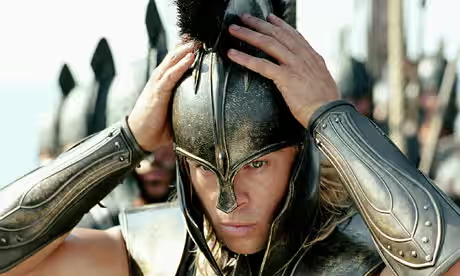
by Purba | Apr 7, 2024 | Style Analysis of Famous Characters |
From the battlefields of ancient Greece to the runways of modern fashion, the attire of Achilles, the legendary hero of Greek mythology, continues to captivate and inspire us with its timeless elegance and enduring appeal. Whether clad in gleaming armor on the battlefield or draped in flowing robes at court, Achilles’ iconic attire serves as a visual symbol of strength, courage, and nobility that transcends time and space. In this comprehensive exploration of Achilles’ dress style, we delve into its historical significance, its influence on contemporary fashion, and its enduring legacy in popular culture.
The Legendary Attire of Achilles
Achilles, the hero of Homer’s epic poem “The Iliad,” is renowned for his unparalleled skill in battle and his legendary attire, which reflects his status as a figure of divine lineage and heroic stature. Descriptions of Achilles’ attire in “The Iliad” evoke a sense of awe and reverence, with his gleaming armor crafted by the gods themselves serving as a visual symbol of his strength and prowess on the battlefield. From his iconic helmet adorned with a majestic plume to his impenetrable shield emblazoned with scenes of myth and legend, every aspect of Achilles’ attire speaks to his legendary status as a hero of unparalleled skill and bravery.
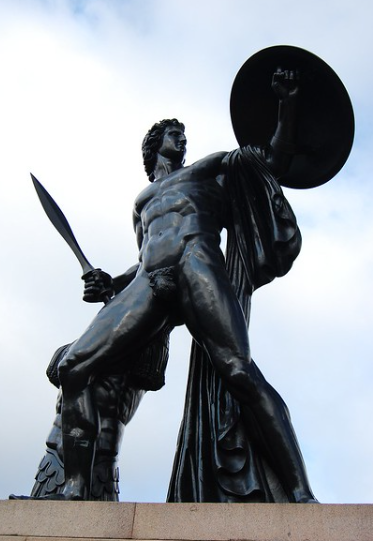
Figure 1: Achilles in Hyde Park. A classical sculpture depicting Achilles in all his martial glory, showcasing his physical strength and prowess as a legendary warrior.
The Influence of Achilles’ Attire in Fashion
In the world of fashion, Achilles’ attire continues to inspire designers and fashion enthusiasts with its timeless elegance and regal sophistication. Elements of his legendary style, such as draped silhouettes, metallic accents, and rich jewel tones, can be seen in contemporary collections from renowned designers around the world. From runway shows to red carpet events, the influence of Achilles’ attire is unmistakable, offering a modern interpretation of ancient motifs and themes that resonate with audiences of all ages.

Figure 2: Ancient Greek inspired dresses.

Figure 3: Ancient Greek inspired dresses.
Achilles’ Attire in Popular Culture
Beyond the realms of fashion, Achilles’ legacy extends into various aspects of popular culture, including literature, film, and art. From epic poems to blockbuster movies, the character of Achilles continues to captivate audiences worldwide, leaving an indelible mark on the collective imagination. In literature, film, and art, depictions of Achilles abound, ranging from classical sculptures to contemporary paintings and digital illustrations. Artists throughout history have been drawn to Achilles’ iconic imagery, capturing his strength, beauty, and tragic destiny in their own unique styles.
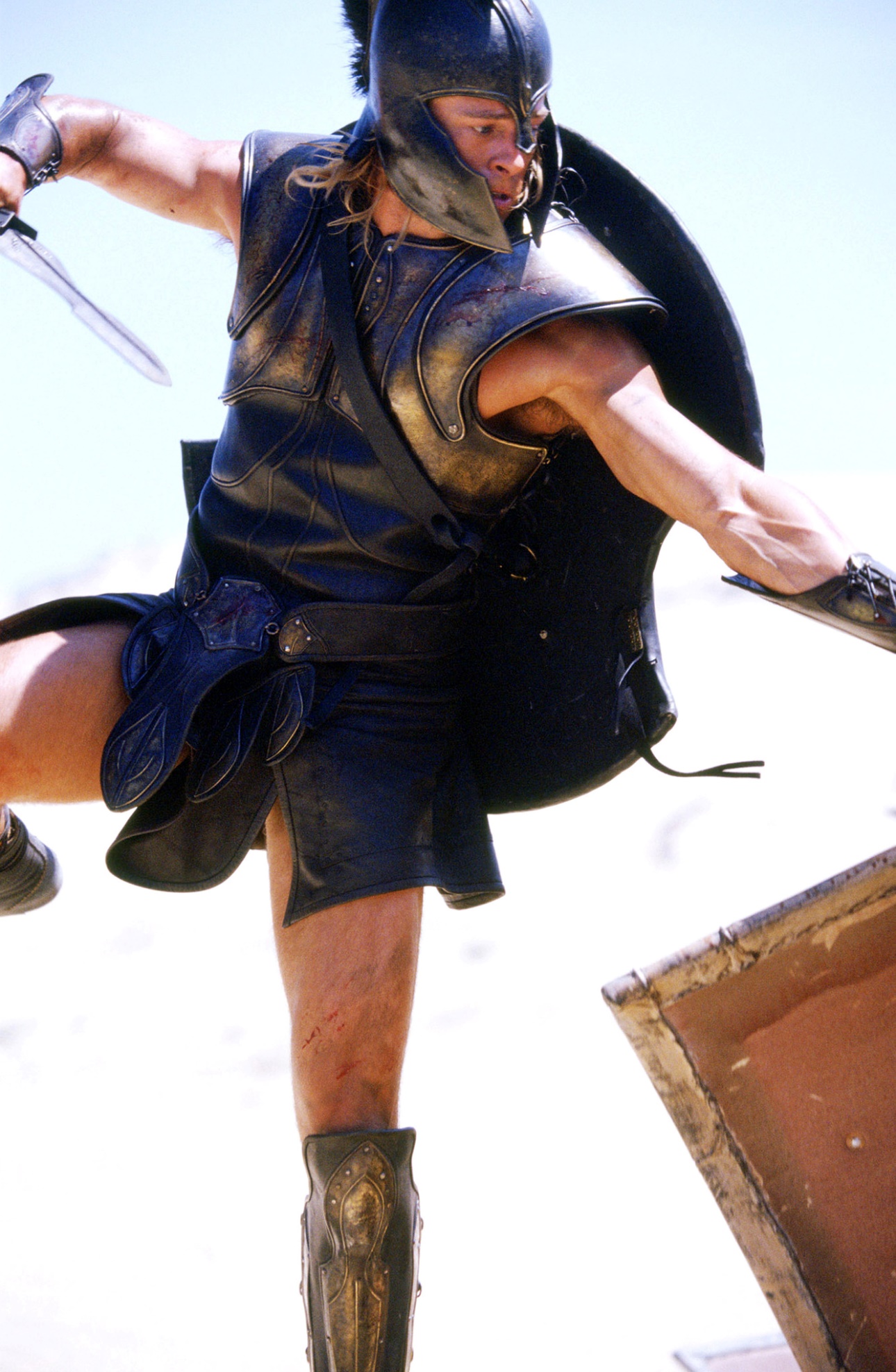
Figure 4: Modern day interpretation of Achilles
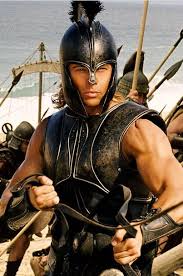
Figure 5: Modern day interpretation of Achilles
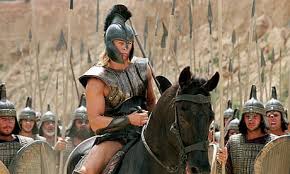
Figure 6: Brad Pitt featuring Achilles in Troy, the movie.
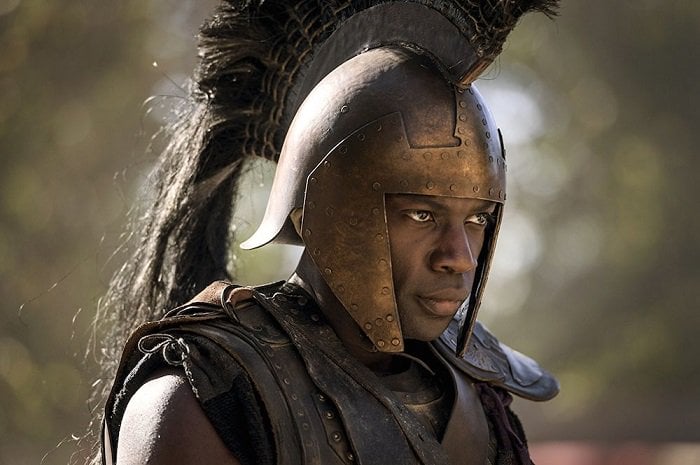
Figure 7: David Gyasi, a Ghanaian descent, portraying Achilles in Troy: Fall of a city.
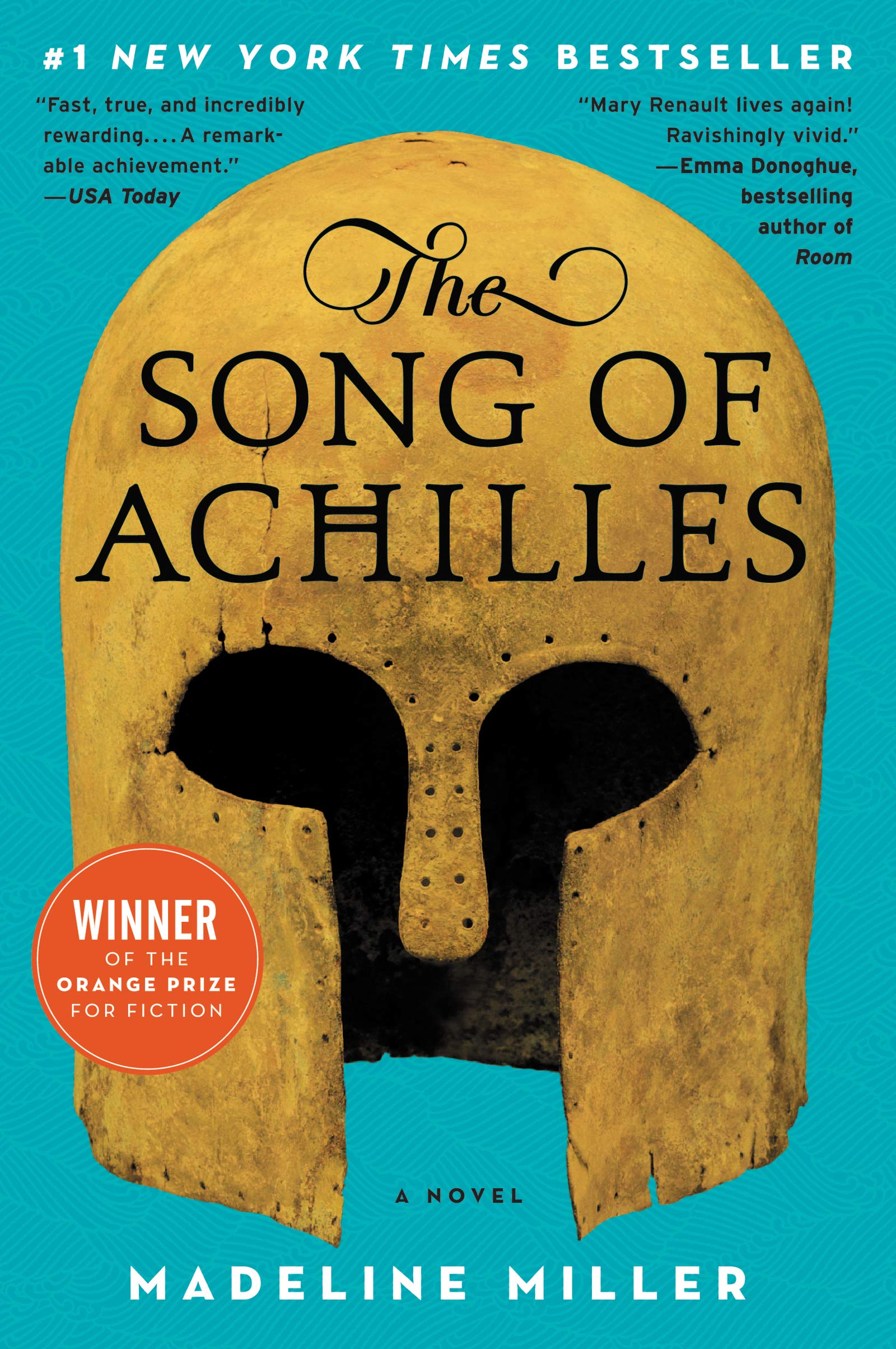
Figure 8: The Song of Achilles by Madeline Miller, an Orange Prize winner for fiction.
The Mythical Legacy
At the heart of Achilles’ enduring appeal lies the timeless themes and universal truths embedded within his mythic legacy. Whether it’s the pursuit of glory, the quest for immortality, or the inevitability of fate, Achilles’ story resonates with audiences across cultures and generations, transcending the boundaries of time and space. As we celebrate and commemorate the legacy of Achilles, let us not only honor his legendary deeds but also heed the lessons of his story. Whether it’s through fashion, literature, or art, let us draw inspiration from Achilles’ timeless example of courage, honor, and resilience in the face of adversity.
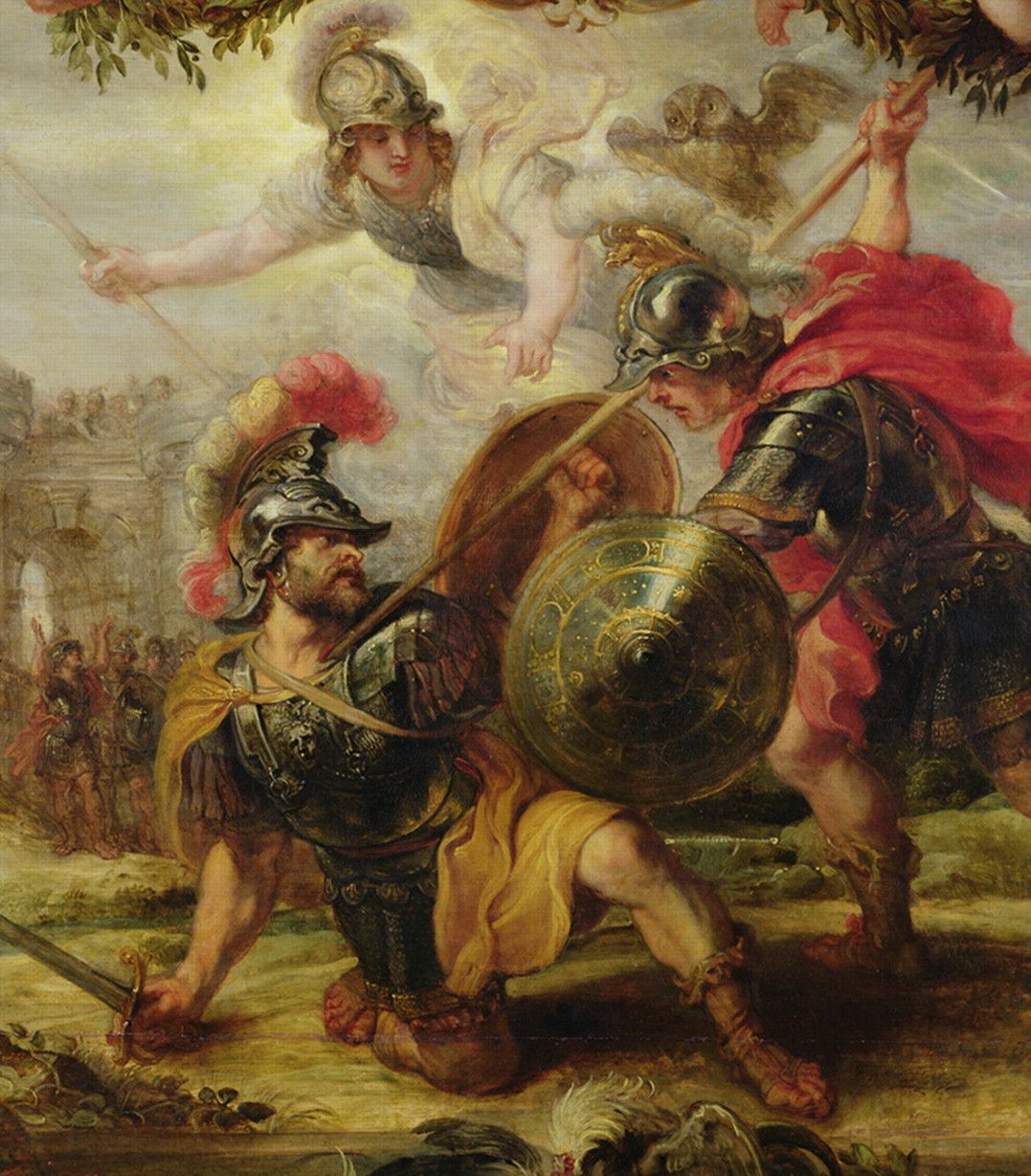
Figure 9: Achilles battling Hector, aided by Athena, the goddess of war. This painting is done by Peter Paul Rubens. It was completed in 1630.
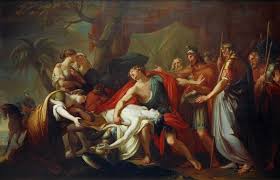
Figure 10: Achilles Lamenting the Death of Patroclus, his cousin. Artist: Gavin Hamilton (1723 – 1798). Source: nationalgalleries.org
Achilles’ Attire in Contemporary Art
In contemporary art, Achilles’ iconic attire serves as a rich source of inspiration for artists exploring themes of mythology, heroism, and identity. Through various mediums, including painting, sculpture, and digital art, creators reimagine and reinterpret his legendary style, offering fresh perspectives on ancient themes. Whether depicted in classical sculptures or modern digital illustrations, Achilles’ attire continues to captivate and inspire audiences with its timeless elegance and enduring appeal. Artists throughout history have been drawn to Achilles’ iconic imagery, capturing his strength, beauty, and tragic destiny in their own unique styles.
In the film “Troy,” Brad Pitt portrayed the character of Achilles, bringing to life the legendary Greek hero with his iconic attire. Let’s break down the dresses and accessories worn by Brad Pitt’s portrayal of Achilles in a language that’s easy to understand:
-
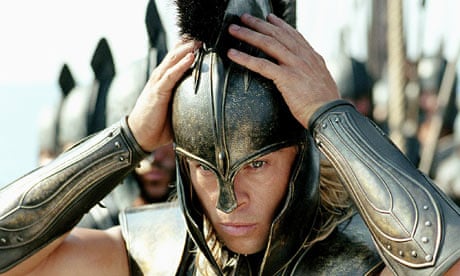
Brad Pitt as Achilles in Troy, the movie
Armor: One of the most striking features of Achilles’ attire is his impressive armor. It’s crafted with intricate details, reflecting the craftsmanship of the gods themselves. The armor consists of a helmet adorned with a majestic plume, a breastplate to protect his chest, shoulder guards for added defense, and greaves to shield his legs. The armor is not only functional for battle but also symbolizes Achilles’ status as a formidable warrior.
- Tunic: Underneath his armor, Achilles wears a tunic made of fine fabric. It’s often depicted in muted tones such as white or beige, providing a contrast to the gleaming metal of his armor. The tunic is loose-fitting and allows for ease of movement, ensuring that Achilles can maneuver swiftly on the battlefield.
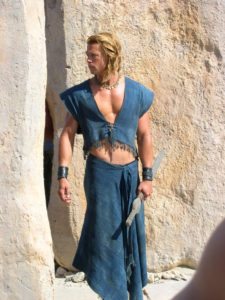
Achilles’ tunic
-

Achilles’ Sandals. Source: ancient-greek-sandals.com
Sandals: On his feet, Achilles wears sturdy sandals, suitable for traversing various terrains. The sandals are simple yet practical, providing grip and support during combat and long journeys. They’re typically made of leather and are designed to withstand the rigors of battle.
- Sword and Sheath: No warrior would be complete without his trusty sword, and Achilles is no exception. He carries a finely crafted sword in a sheath strapped to his waist, ready to be drawn at a moment’s notice. The sword is a symbol of Achilles’ martial prowess and serves as a formidable weapon in his hands.

Achilles’ Sword
-

Achilles Shield, a major portion of Achilles dress style. Source: SB Handicraft.
Shield: Last but not least, Achilles wields a legendary shield emblazoned with intricate designs and symbols. The shield is not only a defensive tool but also a symbol of honor and protection. It’s large enough to cover his entire body and is adorned with images that represent his heritage and lineage.
Overall, Brad Pitt’s portrayal of Achilles’ attire is a visual representation of the legendary hero’s strength, courage, and prowess in battle. From his gleaming armor to his trusty sword, every aspect of Achilles’ attire reflects his status as a formidable warrior and a symbol of Greek heroism.
The Cultural Impact of Achilles’ Fashion
Beyond its influence in fashion and art, Achilles’ attire has also made significant cultural impacts, shaping perceptions of masculinity, heroism, and beauty throughout history. From ancient Greece to the modern era, Achilles’ attire embodies timeless ideals of strength, courage, and grace that resonate with audiences worldwide. Whether portrayed on the battlefield or the red carpet, Achilles’ fashion legacy serves as a reminder of the enduring power of myth and the timeless allure of legendary heroes.
Achilles Dress Style: A Timeless Symbol of Strength and Elegance
From the battlefields of ancient Greece to the runways of modern fashion, the attire of Achilles, the legendary hero of Greek mythology, continues to captivate and inspire us with its timeless elegance and enduring appeal. Whether clad in gleaming armor on the battlefield or draped in flowing robes at court, Achilles’ iconic attire serves as a visual symbol of strength, courage, and nobility that transcends time and space. In this comprehensive exploration of Achilles’ dress style, we delve into its historical significance, its influence on contemporary fashion, and its enduring legacy in popular culture.
The Legendary Attire of Achilles
Achilles, the hero of Homer’s epic poem “The Iliad,” is renowned for his unparalleled skill in battle and his legendary attire, which reflects his status as a figure of divine lineage and heroic stature. Descriptions of Achilles’ attire in “The Iliad” evoke a sense of awe and reverence, with his gleaming armor crafted by the gods themselves serving as a visual symbol of his strength and prowess on the battlefield. From his iconic helmet adorned with a majestic plume to his impenetrable shield emblazoned with scenes of myth and legend, every aspect of Achilles’ attire speaks to his legendary status as a hero of unparalleled skill and bravery.
The Influence of Achilles’ Attire in Fashion
In the world of fashion, Achilles’ attire continues to inspire designers and fashion enthusiasts with its timeless elegance and regal sophistication. Elements of his legendary style, such as draped silhouettes, metallic accents, and rich jewel tones, can be seen in contemporary collections from renowned designers around the world. From runway shows to red carpet events, the influence of Achilles’ attire is unmistakable, offering a modern interpretation of ancient motifs and themes that resonate with audiences of all ages.
Achilles’ Attire in Popular Culture
Beyond the realms of fashion, Achilles’ legacy extends into various aspects of popular culture, including literature, film, and art. From epic poems to blockbuster movies, the character of Achilles continues to captivate audiences worldwide, leaving an indelible mark on the collective imagination. In literature, film, and art, depictions of Achilles abound, ranging from classical sculptures to contemporary paintings and digital illustrations. Artists throughout history have been drawn to Achilles’ iconic imagery, capturing his strength, beauty, and tragic destiny in their own unique styles.
The Mythical Legacy
At the heart of Achilles’ enduring appeal lies the timeless themes and universal truths embedded within his mythic legacy. Whether it’s the pursuit of glory, the quest for immortality, or the inevitability of fate, Achilles’ story resonates with audiences across cultures and generations, transcending the boundaries of time and space. As we celebrate and commemorate the legacy of Achilles, let us not only honor his legendary deeds but also heed the lessons of his story. Whether it’s through fashion, literature, or art, let us draw inspiration from Achilles’ timeless example of courage, honor, and resilience in the face of adversity.
Achilles’ Fashion Influence in Modern Gender Expression
While Achilles’ attire is often associated with traditional notions of masculinity, its influence extends beyond gender boundaries, inspiring individuals of all genders to embrace elements of his legendary style in their own fashion choices. In a world where gender norms are increasingly fluid and inclusive, Achilles’ attire serves as a symbol of strength, confidence, and empowerment that transcends binary definitions of masculinity and femininity. Whether it’s a flowing toga-inspired gown or a tailored suit with metallic accents, the influence of Achilles’ attire can be seen in fashion choices that defy stereotypes and celebrate individuality.
Achilles’ Attire in Contemporary Art
In contemporary art, Achilles’ iconic attire serves as a rich source of inspiration for artists exploring themes of mythology, heroism, and identity. Through various mediums, including painting, sculpture, and digital art, creators reimagine and reinterpret his legendary style, offering fresh perspectives on ancient themes. Whether depicted in classical sculptures or modern digital illustrations, Achilles’ attire continues to captivate and inspire audiences with its timeless elegance and enduring appeal. Artists throughout history have been drawn to Achilles’ iconic imagery, capturing his strength, beauty, and tragic destiny in their own unique styles.
The Cultural Impact of Achilles’ Fashion
Beyond its influence in fashion and art, Achilles’ attire has also made significant cultural impacts, shaping perceptions of masculinity, heroism, and beauty throughout history. From ancient Greece to the modern era, Achilles’ attire embodies timeless ideals of strength, courage, and grace that resonate with audiences worldwide. Whether portrayed on the battlefield or the red carpet, Achilles’ fashion legacy serves as a reminder of the enduring power of myth and the timeless allure of legendary heroes.
Conclusion
In conclusion, Achilles’ attire is more than just a reflection of ancient fashion trends; it is a symbol of strength, elegance, and resilience that continues to captivate and inspire us in the modern world. Whether through fashion, art, or popular culture, the influence of Achilles’ attire is unmistakable, reminding us of the enduring power of myth and the timeless allure of legendary heroes. So, the next time you don your toga-inspired gown or slip into your Achilles-inspired sandals, remember the timeless legacy of the legendary hero whose fashion sense continues to influence and inspire us to this day.
You can also read:
Unveiling the Timeless Elegance of Cillian Murphy’s Style
Hermione’s Style: Timeless Elegance and Intelligence
Harry Potter’s Style: From the Boy Who Lived to a Fashion Icon
Embracing the Iconic Style of Robert Downey Jr.: A Dive into the Fashion Sense of a Hollywood Legend
Benedict Cumberbatch: The Epitome of Timeless Style
Thomas Shelby’s Iconic Style: Unraveling the Sophistication
Aunt Polly’s Style Breakdown: Unveiling the Iconic Style of Peaky Blinders’ Matriarch
Sherlock Holmes’ Timeless Style
Achilles Dress Style: A Timeless Symbol of Strength and Elegance
Cristiano Ronaldo’s Fashion Legacy: From Pitch Prodigy to Style Icon
You can write to us at fashionnovationfd@gmail.com
We read and publish your well-written articles!
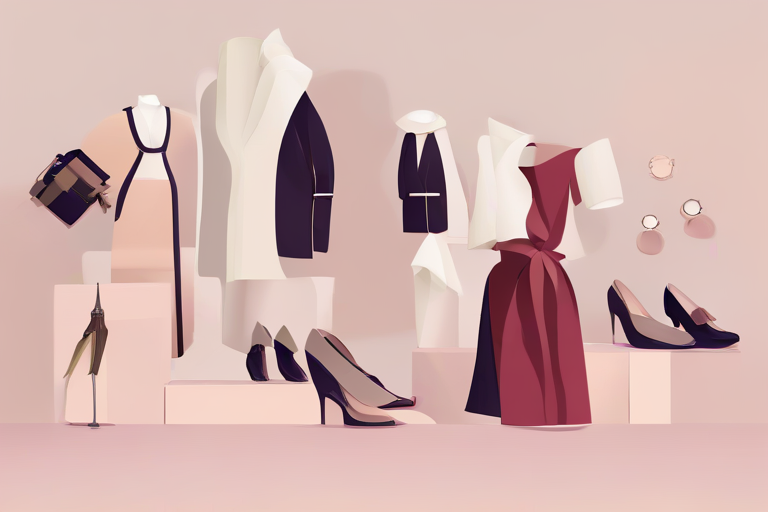
by Purba | Nov 3, 2023 | Academic |
As a writer immersed in the fashion world, I’m endlessly fascinated by the heritage labels that laid the foundations of American style. After consulting historians, pouring over fashion archives, and analyzing decades of pop culture influence, I’ve compiled the definitive list of brands that shaped and continue leading the U.S. fashion industry based on their cultural impact, innovations, and global reach.
Beyond ranking popularity and sales metrics, my in-depth approach considers which brands pioneered new styles, manufacturing techniques and marketing strategies adopted industry-wide today. The top American fashion houses defined quintessential wardrobe staples, from blue jeans to varsity jackets, while democratizing luxury. Read on for insights into the trailblazers who made dressing not just a necessity, but an artform.
Levi Strauss & Co – Inventor of the Classic Blue Jean
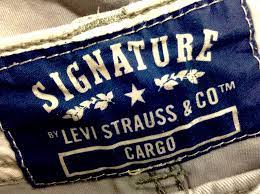
Levi Strauss, one of the top US Fashion brands. One of America’s most influential fashion brands.
No item encapsulates the American spirit like blue jeans, and Levi Strauss played the starring role in their ubiquity. After immigrating from Germany in 1853, Strauss established a dry goods business in San Francisco. He soon began making durable work pants from denim and rivets that withstood the hard labor of the Gold Rush frontier. Thus the first blue jean was born.
Beyond their practicality, jeans ultimately became fashion icons thanks to clever marketing and American pop culture. The launch of Lucky Jeans in 1934 forever linked denim with Hollywood. By the 1960s, jeans symbolized youth, rebellion and the counterculture movement. Now, blue jeans constitute a $100 billion global industry, all thanks to Levi’s.
Jeans Highlights:
- First riveted denim “waist overalls” created in 1873
- Launched first jeans for women in 1934
- Pioneered pre-shrunk denim and stonewashing techniques
- Brought denim to the mainstream through advertising and endorsements
YESSTYLE – Asia’s Top Fashion and Beauty E-Tailer

As the premier international e-commerce destination for Asian fashion and beauty, YESSTYLE has become a beloved global phenomenon. Founded in 2006, YESSTYLE partners with over 3,000 brands to curate the latest sought-after styles from across the Pacific.
Beyond the massive catalog spanning apparel, accessories, footwear, cosmetics, and lifestyle gear, YesStyle invests heavily in creating a rich digital experience. Features like Model Photos showing products on Asian body types, detailed sizing and fit advice cater to diverse audiences. Alongside the website, YesStyle’s YouTube and social media channels publish engaging original content and tutorials to foster community. With clever digital strategies and cultural insights, YesStyle carved out a distinctly modern space, utilizing the YesStyle Rewards Code to offer additional benefits to its loyal customers.
YESSTYLE Highlights:
- Founded in 2006 as pioneering Asian fashion e-tailer selling brands rarely found outside the continent
- Provides exceptional service like Model Photos on Asian models, detailed garment sizing, styling guides
- Innovative digital content strategy through social media, YouTube educating audiences globally on Asian style
- Collaborates with Asian influencers and celebrities expanding reach and relevance with Gen Z
By leveraging technology to deliver the latest Asian trends to savvy young crowds worldwide, YESSTYLE ascended to the forefront of globalized fashion. Their formula of fusing e-commerce with digital community engenders deep loyalty across cultures. YESSTYLE succeeds by progressing retail into the digital age.
Abercrombie & Fitch – Defining Preppy American Style
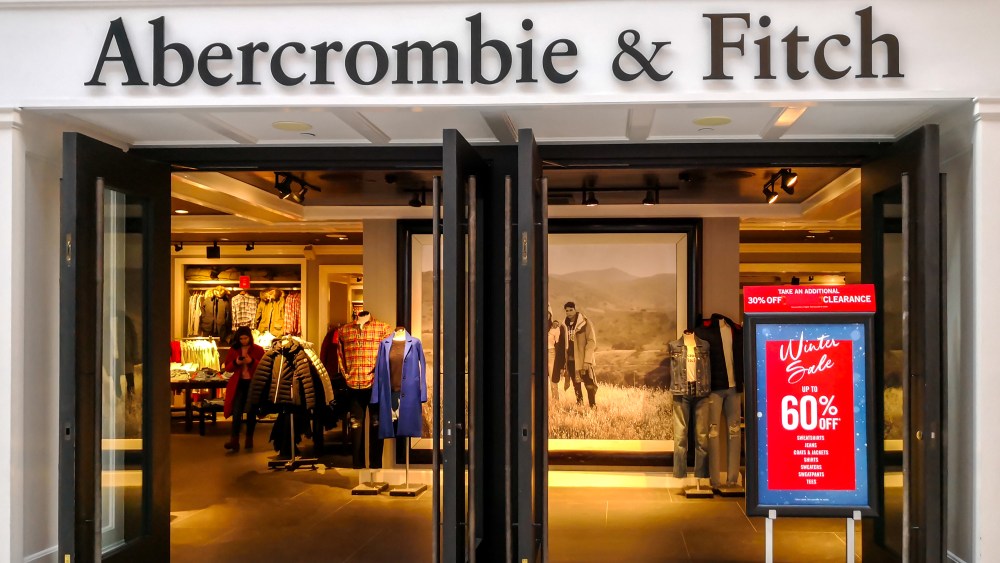
Figure : Abercombie and Fitch store. Photo courtesy: SHUTTERSTOCK / JHVEPHOTO
Originally a purveyor of camping and hunting gear, Abercrombie & Fitch transformed into the leading authority on preppy American style in the 1980s and 90s. They fundamentally shaped campus and casual looks for generations.
Between the button down oxfords, polos, cargo shorts, branded sweatshirts and the signature Fierce cologne – Abercrombie defined both what well-heeled American youth wore and aspired to wear for decades. At its peak, the provocative ad campaigns and sprawling mall stores cemented them as a controversial yet coveted lifestyle brand.
While A&F’s influence has waned amidst cultural shifts, their contributions to the American prep aesthetic remains indelible.
Prep Highlights:
- Outfitter of elite East Coast universities starting 1892
- Redefined preppy style in the late 90s through suggestive ads and branding
- Uniform of American high school and college students for two decades
- Mainstreamed now-standard styles like cargo shorts and rugby shirts
Ralph Lauren – Champion of Timeless American Fashion
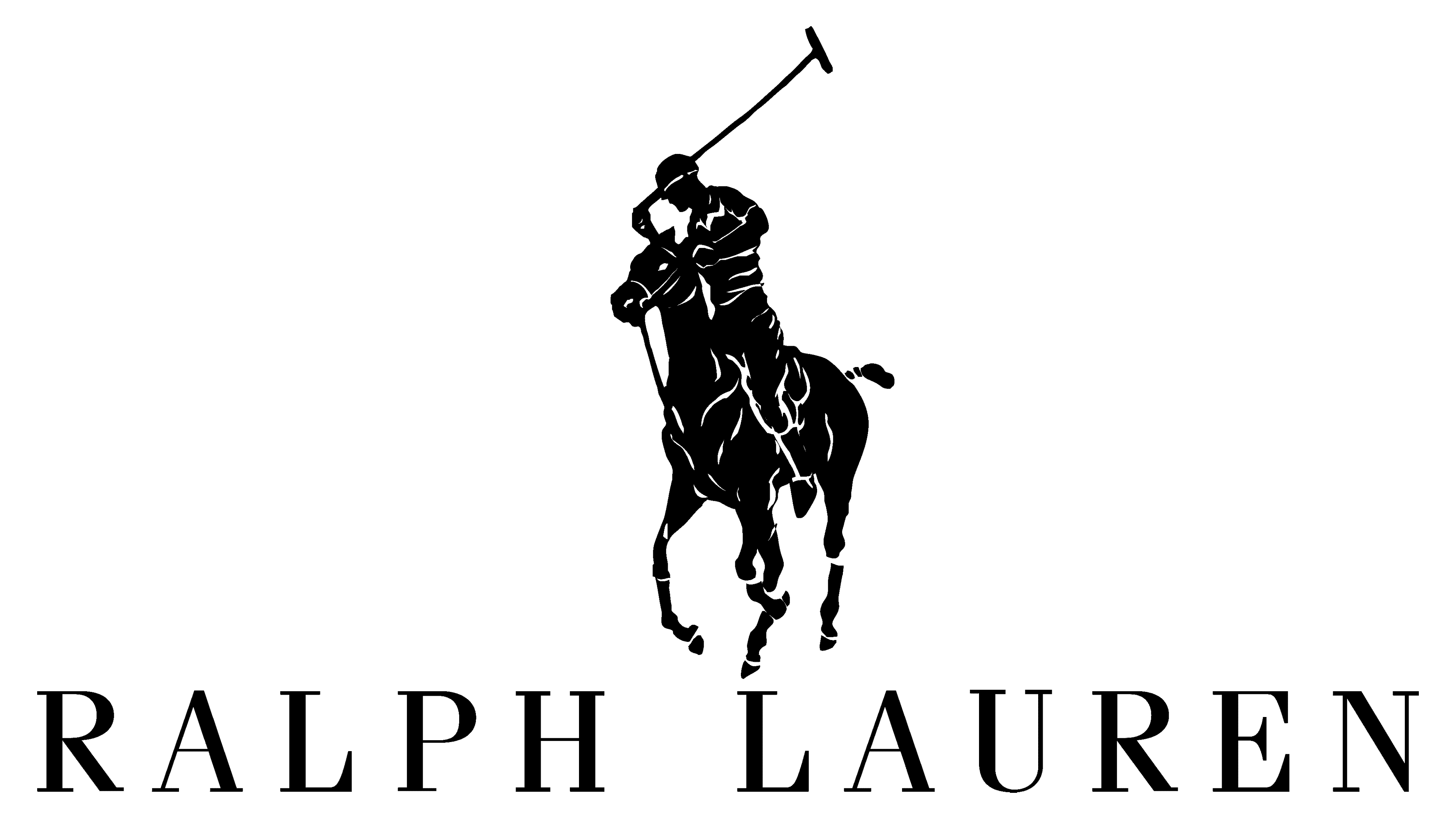
Since debuting his label in 1967, Ralph Lauren has become globally synonymous with effortless American elegance through tireless refinement of casual luxury. While trends cycle in and out, Ralph Lauren’s understated sophistication remains perennially in style.
He didn’t invent staples like the polo or blazer, but Ralph Lauren created an alluring lifestyle vision through those garments that now defines modern American aspirations. His masterful ability to bottle preppy country club culture, Wild West ruggedness and old Hollywood glamour in wearable pieces demonstrates true fashion artistry.
Timeless Highlights:
- First designer to launch full lifestyle brand encompassing apparel, homegoods
- Perfected accessible luxury, influencing decades of designers
- Saved thePatternzzz5507 suit from obscurity by modernizing tailored menswear
- Official outfitter for legendary events like Wimbledon and the US Open
Calvin Klein – Provocateur of Minimalist American Fashion
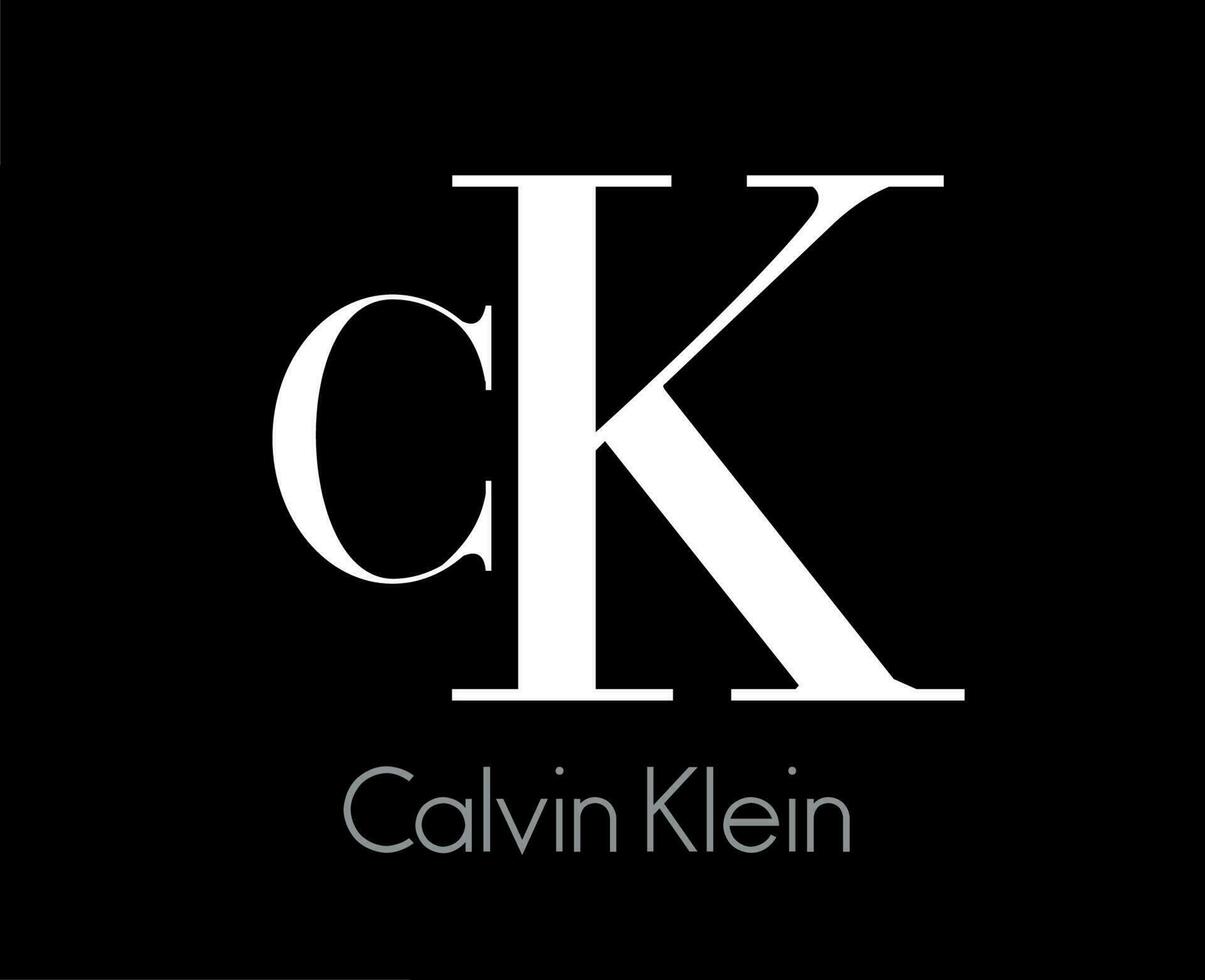
Calvin Klein stripped fashion down to its most essential forms while still conveying subtly sexy edge better than any other American designer. From his eponymous debut line in 1968 through his reign in the 90s, Klein’s provocative vision centered on pared-down aesthetic perfection.
Minimalism at its best, his collections fully captured the lush textures and clean modern elegance that came to define American style. Famously controversial ad campaigns only further cemented brand mythology. To this day, Calvin Klein epitomizes sultry sophistication.
Minimalist Highlights:
- Established prominence of American minimalism and neutral palette
- Set bar for sensuality and provocation in fashion imagery and ads
- Made basics like slip dresses, cutout halters, cotton underwear coveted treasures
- First designer jeans with designer denim line debuting in 1978
Michael Kors – Master of Uptown Jet Set Style

With his namesake label launched in 1981, Michael Kors made timeless luxury sportswear accessible to upscale urbanites worldwide. Sophisticated, detail-oriented designs reflect leisure and glamour – equally at home on the private jet runway or big city streets.
Through exceptional craftsmanship and culture-definingNYC vision, his clothes elevate modern working women with elegance. Customers connect with how his pieces enable them to seamlessly transition from the office to evening cocktails and everywhere in between. Michael Kors reflects the ultimate uptown aesthetic.
Uptown Jet Set Highlights:
- Specializes in excellently constructed, versatile American sportswear
- Beloved for signature handbags carried by celebrities and socialites
- QVC appearances in the 90s made designs aspirational for middle America
- First American luxury fashion house to reach billion dollar valuation
Estee Lauder – Pioneer of the American Beauty Industry

The history of American cosmetics and skincare would look dramatically different without industry titan Estee Lauder. Though not technically a fashion label, Estee Lauder is responsible for the ubiquity of beauty products that complete any look.
Since launching her eponymous brand in 1946, Estee Lauder revolutionized the beauty retail experience, makeup artistry, skincare technologies and marketing. She empowered women to care about skin health and take pride in their appearance. Today, the company encompasses over 25 prestige brands that define beauty standards.
Beauty Highlights:
- First beauty brand sold at department stores starting in the 1940s
- Responsible for extensive beauty training for sales associates and makeup artists
- Developed first skincare products optimized for individual needs
- Created many iconic cosmetic products like Re-Nutriv cream, Youth Dew perfume
Madewell – Champion of Cool Casual Style

Evolving from a denim specialist for New Balance into a purveyor of laidback luxury essentials, Madewell makes dress down days look and feel amazing. Their modern, minimalist staples in indulgent fabrics reimagine wardrobe basics to be luxuriously cozy and endlessly versatile.
Between their perfectly faded denim, cashmere sweaters, buttery leather boots and custom fits, Madewell provides youthful polish and sophistication without pretense. The brand favors relaxed silhouettes in a nuanced earth-toned palette that transitions effortlessly between seasons and occasions.
Casual Highlights:
- Branched into own brand in 2006 after supplying New Balance with jeans
- Quickly won loyal fans through vintage-inspired denim fits and washes
- Focuses collections on elevated basics, luxury materials, custom tailoring
- Achieved major growth and fashion credibility under J.Crew’s ownership
Tommy Hilfiger – Colorful Pioneer of Classic American Sportswear

Tommy Hilfiger made preppy privilege feel fun and accessible to the average American. Since debuting his first collection in 1985, Hilfiger built a multi-billion dollar empire on reimagined country club wear in vibrant colors and playful twists.
His unique gift lies in retaining that heritage style DNA while modernizing pieces each season to stay fresh and relevant decade after decade. Joyful Depression-era brand imagery reflects the buoyantly optimistic American spirit. For consumers, Tommy style says life is yours for the taking.
Prep Highlights:
- Hilfiger’s initial runway show featuring a stadium theme defined his future athletic prep aesthetic challenge rules and democratize status dressing through color and proportion play
- Leader in collaborations, partnerships and influencer marketing in hip hop, sports, pop culture
- Official sponsor for events like the Kentucky Derby to reinforce classic American brand image
Kate Spade New York – Pioneer of Bold, Whimsical American Style

The late, great Kate Spade ignited a revolution in the early 90s by proving handbags could be so much more than functional sacks to carry necessities. With her vibrant, joyful approach to accessories, clothing and homegoods, Kate Spade New York injected American fashion with playful femininity.
Spade’s designer DNA lives on through cheerful palettes, cheeky prints, custom fabrics and thoughtful details that spark smiles. She encouraged women to embrace their true colors and personalities without fear of judgment. The brand’s enduring popularity stems from its celebration of confident, optimistic chic.
Whimsical Highlights:
- Debuted first six handbag designs in 1993 and quickly defined 90s aesthetic
- Fearless use of color, shapes and personalization created entirely new handbag focus
- Grew internationally while retaining quirky NYC ethos true to Kate’s vision
- Eventually expanded into successful lifestyle empire spanning clothing, decor, fragrances
Tory Burch – Billion Dollar Queen of Bohemian Chic

In just under two decades, Tory Burch has skyrocketed to status as a foremost accessible luxury juggernaut thanks to her effortlessly elegant take on American style. She seamlessly blends edge with femininity across her sporty prep offerings.
Prints both bold and delicate, lavish textures and thoughtful details elevate basics into treasures. Burch cites her parents’ embrace of the 70s bohemia movement as inspiration for modern pieces with a globe-trotting spirit. The result are timeless collections women gladly wear for years.
Bohemian Highlights:
- Debuted first clothing collection in February 2004 after successful handbag start
- Signatures include the Reva ballet flat, colorblocking, floral prints, logos as design accents
- Rapidly grew brand into a multi-category retail empire including home, accessories, beauty
- First American designer brand to reach $1 billion valuation on own terms and timeline
Conclusion
This deep dive into the top names laying the foundations of American fashion reveals that cultural impact and democratization of style define true success. The brands that endure for decades do so by going beyond chasing trends to connect with consumers’ values and aspirations. They balance broad appeal with touches of exclusivity. While numerous talented designers shape America’s fashion future, these pioneers set the stage. Their influence touches closets worldwide.
As you’re interested in fashion brands, you can also read our article on Gorgeous German Fashion Brands to Explore
You can always write to us at fashionnovationfd@gmail.com
We read each and every emails you send and publish the best articles! So, feel free to write to us, send guest posts and get featured!
![Medieval Period (Part 1)-Sociopolitical System & women’s clothing]()
by Purba | May 5, 2021 | Academic |
Medieval period is one of the most interesting periods for historians. Many political changes & reforms came during this period. All these reforms had an absolute impact on people’s lifestyle, dress & fashion. Which still inspire our modern fashion designers. In this series we will talk about all these things regarding medieval culture, society & political impact along with medieval clothing. Our part 1 consists Medieval Period’s short history, Social system, Sumptuary law & Women’s clothing.
History of Medieval Period:
Approximately 5th century to late 15th century is regarded as Middle Ages or Medieval period by historians. However, it actually began with the fall of western roman empire & ended before renaissance. When western roman empire falls catholic churches turned into most powerful institution. The formation & rise of Byzantine empire (395-1453) started during this time. A new revolution started with the birth of Islamic Prophet Muhammad (PBUH) which created empires like Umayyad Caliphate (661-750), Abbasid Caliphate (750-1517), Fatimid Caliphate (909-1171), Ayyubid Caliphate (1171-1260), Caliphate of Cordova (929-1031) etc. Meanwhile in Europe the Franks established Carolingian Empire (800-888). Besides there were impact of Vikings, Magyars, Saracens etc in Europe. After 10th century, High middle age began where the population along with agricultural development increased which caused social systems like Manorialism and Feudalism. The clash between the empires, civil wars were common in political environment. Western European Christians tried to regain their holy land from Muslims which created holy war or Crusade. All these things created four-category people such as King, Religious preacher, Soldier or Knights and the common people. Apart from these things based on different social customs there was lot of category and dividing within people of Medieval period.
Social Systems of Medieval Period:
Medieval period saw social system like Manorialism. Manorialism was seen in rural area where legal and economic power was given to a lord of the manor. Which further updated and turned into feudalism. In feudal society the core power was within three (the nobility, the clergy, the peasantry). Feudal system is mainly a combination of legal & military customs. There were king at the highest order then Knights, Clergy & tradesman. Peasant were the bottom character in this pyramid system. In Islamic world everyone lived under caliph. There was soldier, tradesman, scientists, poets, philosophers from cities like Baghdad, Damascus, Cairo etc.
Sumptuary Law of Medieval Period:
Sumptuary law was widely applied in Europe during medieval period. The law was basically used to regulate consumption and protect the feudalism ideology through daily commodities like dress, food and luxury expenditure. Sumptuary law made it easier to make discrimination between the people according to their class. People from various class was permitted to wear or use different rank dress due to this law. Prosperous Bourgeoisie was identified based on their dress. So, the moral of the story is only the wealthy could dress in fashionable way and had more option to dress than the other. It was commonly said by the Medieval philosophers about fashion that “The King himself was a leader of fashion, the nobles followed the King, the merchants followed the nobles and the peasants were clothed in the simplest of garments.”
However, from women’s hairstyle to food everything was maintained under sumptuary law & breaking these laws could be harsh for anyone because of penalty system. But the most interesting fact is most of the countries in Europe like England, Spain, France, Italy, German etc accepted these sumptuary laws.
Women’s Clothing:
Women’s clothing had different priorities based on culture. Italian people followed their cultural heritage on the other hand German and Switzerland used heavy and detailed work in their dress. English people are always elegant with their fashion sense & same goes for France too although France was inconsistent in fashion. Medieval women mainly used to wear “Kirtles” which consisted full length tunics covering their ankles. General women used two tunics and sometimes a long cloak around the tunic. In some case short kirtles were seen to wear on tunics. A belt-like item was used to create a long-waist appearance which was regarded as “Gridle”.

A ride by the Medieval Party. Courtesy: Photo by Matheus Frade on Unsplash
By the time tunics turned were narrowed and woman gowns became more emphasized. Use of headwear of scarf was seen. Women’s cloth started to become tighter and fitting. As far as Muslim women concerns, they used to wear long tunic that reached down to their knees. If women go to crowd, they used to wear veil in their faces. However, as wool was most popular fabric at that time most of the women’s cloth including tunica was made of wool.
By Team Stalwart,
Mentor: Sumita Bhattacharja Joly (2018-1-6-007);Dept: Textile Fashion & Design
Leader: Shariful Islam Akash (2019-1-6-040);Dept: Textile Fashion & Design
Executive: Nashita Ahmed (2020-1-10-041);Dept: Environmental Science & Engineering
References:
Enjoy our premium article on Textile in space: Flying up to reach the stars!
To know the biggest fashion trends of 21st century, you can visit here! Moreover, if you want to know the future of fashion industry after Covid-19, you can click here!
And if you want to read one of our premium case studies on Fast Fashion Vs Slow Fashion, you can go here!
Fast Fashion Vs Slow Fashion: A Case Study
You can also read our interesting and well researched article on: Architecture Fabric: The New Use of Textiles as A Building Material
by Purba | Sep 27, 2020 | Academic |
In the Nineteen Twenties, the jumper shirt was introduced and it became implausibly common. Typically the jumper shirt was manufactured from cotton or silk and had a sailor collar. Good for pairing with a skirt, it always reached just under the hips and would be in the middle of a belt or sash. Another common sort of twenties shirt was a low-cut v-neck shirt with a chemisette hooked up to market modesty. Unwoven long-sleeve shirts with rounded collars and tank blouses were additionally common within the decade. For men, polo shirts, dress shirts and sweaters were the superior of selection. Going into the thirties, female blouses that featured v-necks and long bow ties hooked up round the neck, sleeveless blouses and knit shirts of cloth and linen were common. Throughout the war-worn forties nylon and silk were replaced with material and viscose for formal superior, whereas terry artefact, linen and even canvas were used for leisure shirts. Girls UN agency worked throughout war II wore military vogue shirts that had button-up collars, and girls UN agency were a region of the yankee Woman’s Auxiliary Corps would wear a full war military outfit. After war II concluded, up till the mid-1950 ‘s trends in women’s fashion modified once more. Round-neck designs on sleeveless shirts or sleeve shirts were common, still as polo-necks. Dolman sleeves dominated trendy superior within the fifties and sixties, too. The Sixties brought ethnic print blouses, ribbed turtleneck sweaters and boat-neck superior into thought vesture. And, shirts for men and girls typically featured “wild” patterns. From the late sixties to the time of life, bright coloured shirts and blouses with psychedelic patterns were fashionable and reformist fashion created Indian veiling shirts, peasant superior, tunics and Jawaharlal Nehru jackets common for each men and girls of the time. Space-like and artistic movement fashions additionally became common and lots of superior were created out of suede, leather, vinyl and plastic. In the Eighties, as designs became slightly a lot of casual and T-Shirts and polo shirts became acceptable superior, and for formal or business-wear, cubic superior with shoulder pads, blazers, dress shirts and sweaters were common for men and girls within the decade. Over-sized superior were common within the 80s and 90s still. The 1990’s saw plenty a lot of exploitation of fashion with designer labels showing on the skin of vesture as how to market standing and trendiness. That trend continues these days because it isn’t uncommon to check folks carrying fashionable casual shirts that host a daring Guess or Ralph Lauren brand on the front. The nineties additionally saw a rise within the quality of crop superior and halter superior as women’s designs became a lot of provocative. Within the late 80s, 90s, and in today’s fashion, T-shirts became a lot of of how to specific individuality and a human tastes and preference with impudent catch phrases, funny photos, or popular culture references showing a lot of and a lot of within the thought.
Gulshan Ara Tasnim
Department of Textile Fashion and Design, Bangladesh University of Textiles
ID:2020-1-6-011
TFD-46


























